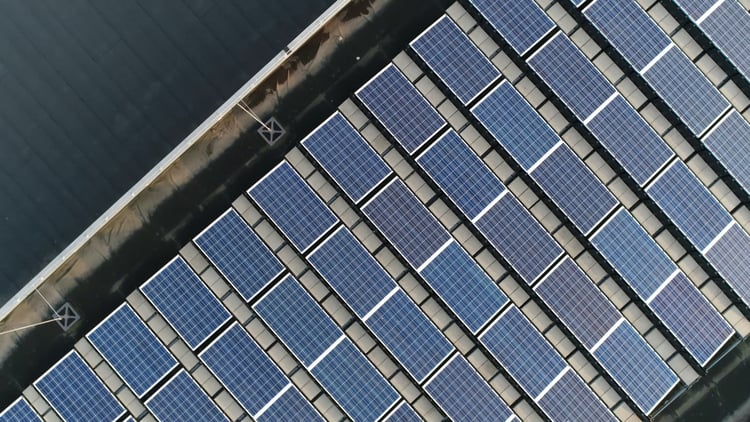The financial benefits of solar energy have been proven around the world and the US surpassed 100 gigawatts of capacity in early 2021. Adopting solar energy makes sense at all project scales, from home systems with fewer than 20 panels to solar farms on a large scale with thousands of them. The initial cost of solar panels is recovered several times over during their 25+ year lifespan.
In addition to having an attractive ROI, solar energy has great potential to reduce carbon emissions. Unlike fossil fuel-powered power plants, which produce large emissions during their lifetime, the impact of solar panels is mainly limited to their manufacturing, delivery and installation process. Once installed, they can generate electricity for decades with zero emissions.
Reduce your electricity bills and building emissions simultaneously with solar energy.
The amount of carbon emissions avoided by solar panels will depend on their productivity and also the source of electricity being replaced. For example, a 100 kW solar panel that replaces coal power in a sunny location will prevent more carbon pollution, compared to a 100 kW solar panel that replaces natural gas power in a location with little sunlight. However, both systems will have an environmental benefit regardless.
Here we'll discuss the carbon-saving potential of solar panels, focusing on what building owners can expect in New York City. However, the same concepts apply anywhere.
Estimating Electricity Production from Solar Panels

The emissions avoided by solar panels will depend on their productivity, since each kilowatt-hour generated by them displaces one kilowatt-hour from the grid. The World Bank Group's Global Solar Atlas can give an idea of local generation potential.
- You can zoom in on the point of interest and click to find the specific power of the solar panels, which is measured in kWh/kWp.
- The unit kWh/kWp tells you how many kilowatt-hours you can expect per year for each installed kilowatt of solar capacity.
- For example, if you have 100 kW of solar capacity and Atlas Solar Global shows 1,500 kWh/kWp for your location, you could generate 150,000 kWh per year.
Assuming you have a favorable location in New York, you can expect to generate more than 1,400 kWh/kWp, and that translates into avoided emissions. To demonstrate the potential emissions you can avoid, we will calculate the benefit of using 1,000 solar panels rated at 350W each. The total capacity of the solar panel is 350 kW and you can expect an electricity production of 490,000 kWh per year.
All solar panels lose some generating capacity each year, but the degradation rate is typically less than 0.50% per year for high-quality modules. Taking this into account, the 1,000 solar panels in the example above would generate around 11,515,000 kWh over a 25-year period. The next step is to calculate how this clean electricity translates into avoided carbon emissions.
Estimating CO2 emissions avoided when using electricity from solar panels

As mentioned above, the exact emissions avoided with solar energy will depend on the source of electricity replaced. Generally, these emissions are measured in metric tons of CO2 equivalent per kilowatt-hour (tCO-eq/kWh). However, in the case of New York we have a very useful reference in Local Law 97 of 2019 that provides emission factors for several sources.
- The emission factor for grid electricity is 0.000288962 tCO2-eq/kWh.
- In this example, 11,515,000 kWh would save 3,327.40 metric tons of CO2-eq.
- Since there are 1,000 solar panels in the array, each one saves about 3.3 metric tons of CO2-eq over its 25-year lifetime.
The 2019 LL97 penalizes emissions above the construction limit by $268 per metric ton. In this case, the solar panels would be saving the building owner $891,743 in carbon fines in addition to their electricity savings.
The US EIA reports an average commercial electricity price of 18.36 cents/kWh for New York (latest data as of October 2021), and the 11,515,000 kWh are worth $2,114,154 at that price. Considering both the electricity savings (at current prices) and the emissions avoided over time, these 1,000 solar panels are saving their owner more than US$3 million over 25 years.
Conclusion
This is a very simplified calculation, since electricity prices are always changing, and NYC could modify the emission factors and penalties in LL97. However, this estimate gives an idea of the carbon emissions and electricity bills that can be avoided over time with solar energy.
Additionally, remember that solar panels can help you comply with Local Laws 92 and 94 of 2019 that make green roof systems mandatory for many types of buildings – solar panels are accepted for this purpose.

